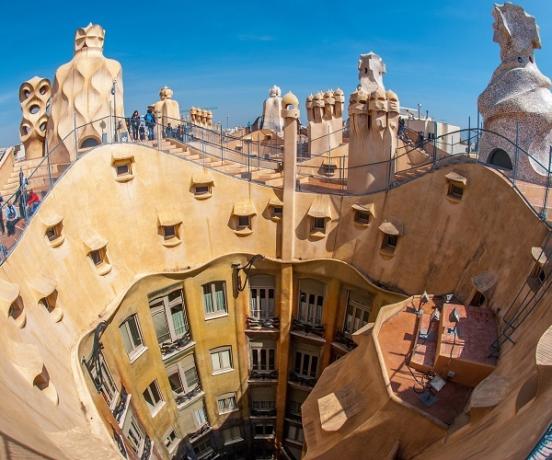Modernism was an artistic movement that emerged at the beginning of the 20th century, both in Europe and in Brazil.
The movement influenced all forms of artistic expression: painting, plastic arts, literature and architecture.
Discover the most striking features of modernism:
1. Breaking with traditional patterns
The desire to break with formal and traditional aesthetic standards is one of the strongest characteristics of modernism.
Artists who were part of the modernist movement broke the patterns of ancient movements such as Symbolism and Parnassianism.
In literature, the breaking of traditional patterns is very clear by the presence of an anarchist feeling motivated by a desire for more freedom. The use of a less formal and more colloquial language also represents a break with the traditional of the time.
2. Influence of opinions and thoughts
Another striking feature of the modernist movement is the presence of artists' thoughts and opinions in their works. In modernism, opinions on politics and other social events became part of the works produced.
Modernism, especially in the second phase (1930 - 1945), was characterized as a form of expression of ideas and discussion on social issues. Thus, the most common and everyday themes were a great influence on the art produced during modernism.

Di Cavalcanti - Settlers
3. Characteristics of Brazilian modernism
Brazilian modernism (1922 - 1960) sought characteristics that were characteristic of the movement in the country, in an attempt to differentiate itself a little from the movement in the rest of the world.
Examples of modernism in Brazil are the use of a sense of humor and criticism of everyday situations. Another striking feature of Brazilian modernism was the constant search for total freedom in the forms of artistic creation and expression.
Radical criticism of social and political issues was also very frequent in Brazil, including the publication of artistic manifestos with a strong character of social criticism, such as the publication of the Manifesto da Poesia Pau-Brasil, Manifesto Antropófago and the book Casa Grande e Senzala.
4. Use of curves and undulations
In modernist architecture and painting, the use of curves is a very striking feature.
The Catalan architect Antoni Gaudí is the most famous representative of the architecture of this period. Gaudí's buildings are imprinted with many curvilinear shapes. In Brazil, the architect Oscar Niemeyer was a famous representative of architecture with curved shapes.

Antoni Gaudí - Casa Milà
5. Freedom of forms and creation
This feature is particularly present in modernist literature.
The freedom of creation, in addition to the use of free forms, was connected with thematic freedom. In modernist literature there was a kind of permission that any subject could be turned into a literary work.
The authors started to use punctuation in a different way than was usual until then, often leaving the text with an almost chaotic aspect.
The authors of this period used an informal written language that was closer to the reality of speech. Written verses had more freedom and the use of language with little formality brought poetic texts closer to texts written in prose.
Learn more about the meaning of prose.
See the example in the poem Debussy by Manoel Bandeira.
Here, there...
Here, there...
A skein of thread...
Here, there...
Here, there...
Swings in the air by a child's hand
(Comes and goes...)
That gently and almost to sleep the balance
- Psio...
Here, there...
Here and...
- The ball fell off.
See also the meanings of Modernism and Modern Art.

